The dreams of Charles Rennie Mackintosh
- Published
He is one of Glasgow's favourite sons, but Charles Rennie Mackintosh and his architectural designs from 100 years ago are celebrated far and wide.
The Royal Institute of British Architects, external is hosting its first substantial exhibition devoted to his distinctive style, with more than 60 original drawings, paintings and models.
Mackintosh expert Pamela Robertson, from Glasgow's Hunterian Museum, says some people see the designer as a modernist, some view him as one of the last Victorian architects, while others think of him as Glasgow's art nouveau designer. All could be true.
As the 19th Century drifted into the 20th, Mackintosh drafted this design for a property - not to be built in his lifetime - known as the Artist's House in the Country.
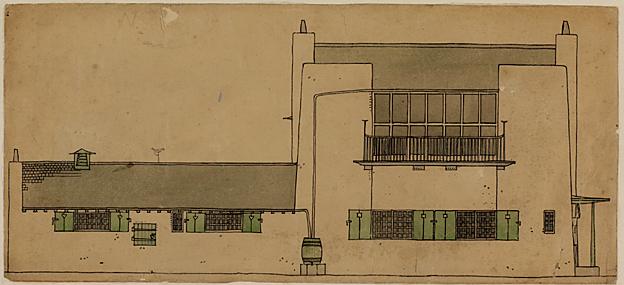
The plans show his emerging pared down style - with fluid lines and artistic asymmetry.
It is very different from the historic revival look in Mackintosh's un-built grand designs that feature in the video above.
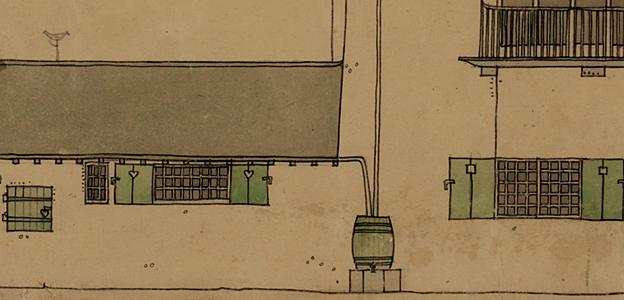
This next design was built in his lifetime.

The Hill House in Helensburgh, to the west of Glasgow, is now run by the National Trust for Scotland and is open to the public.
While he may have tried, but failed, to put his mark on a new cathedral for Liverpool, he did design a church which was built - at Queen's Cross in Glasgow.
The Glasgow School of Art - known as The Mac - is Mackintosh's most celebrated building.
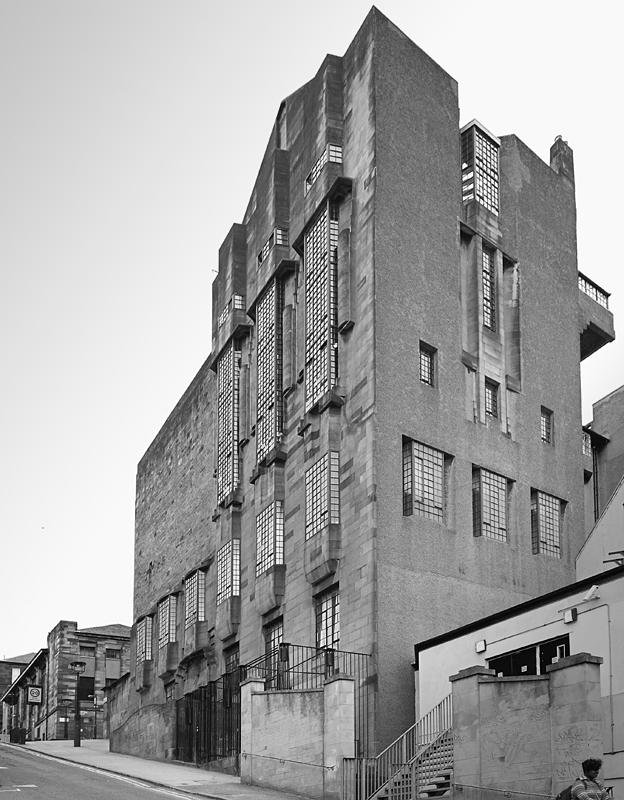
Pamela Robertson says Mackintosh made sure there were some wonderful spaces inside - including a double-height timber-clad library.
Unfortunately it was destroyed by fire in May 2014 - but the school recently announced that the library will be restored to its original state.
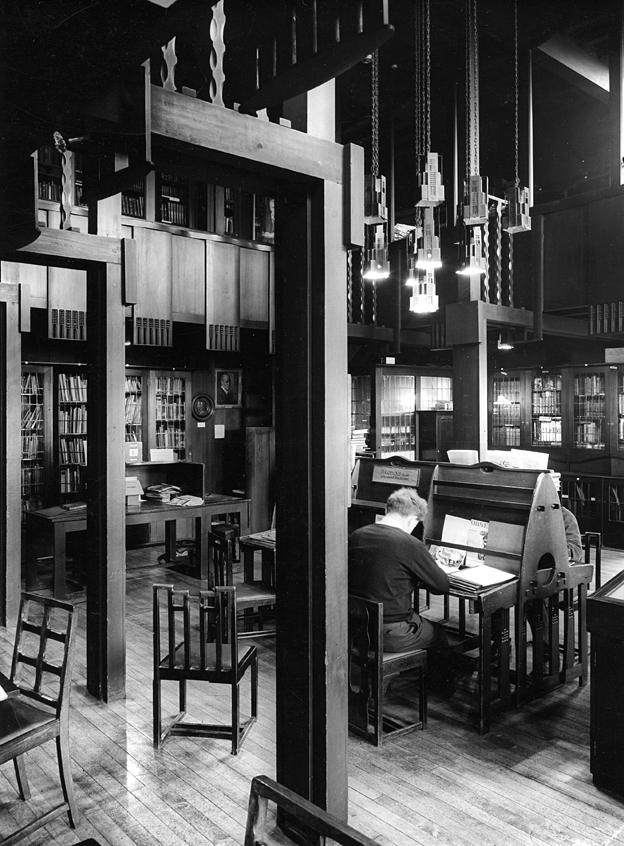
In 1901, Mackintosh entered a European competition - organised by the art publisher Alexander Koch - to design a unique home.

There was a very specific brief - including the incorporation of a music room - for this "House for an Art Lover".

This is Mackintosh's pale vision - sparsely furnished with an elaborate piano at the back of the room.
The curved windows were a collaboration with his new wife - Margaret MacDonald Mackintosh - who designed the decorative panels.
A version of House for an Art Lover was constructed in the late 20th Century in Glasgow's Bellahouston Park.
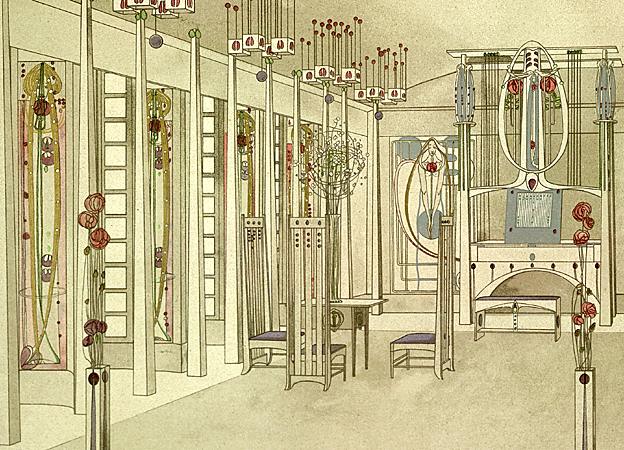
This striking commission - Auchinibert - was built just outside the village of Killearn in Stirlingshire. It is notable for its almost English style.
There are very few photos of Charles Rennie Mackintosh. This next image from the early 1890s is perhaps the most-recognisable.
Pamela Robertson describes it as compelling.
With his floppy bow tie and unstructured jacket, "it's as if he is saying he is an artist first and foremost" she says.
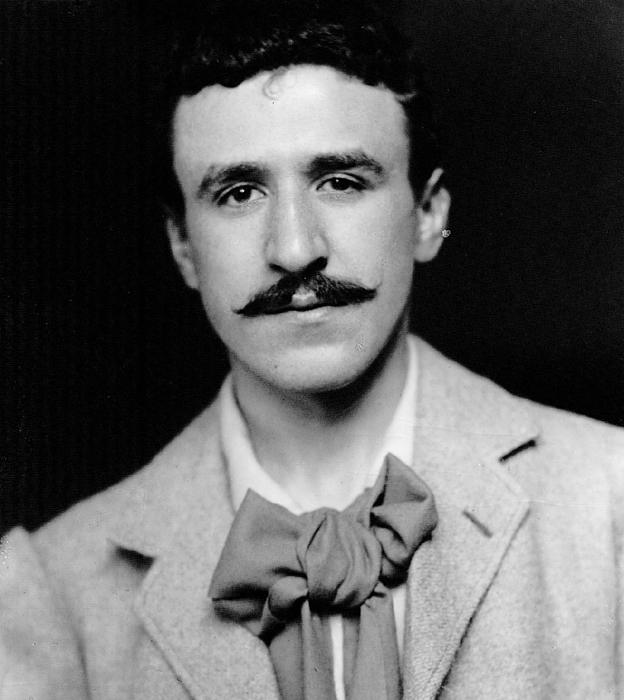
And this final image was painted by Mackintosh himself - a romanticised vision of Glasgow's medieval cathedral at sunset.
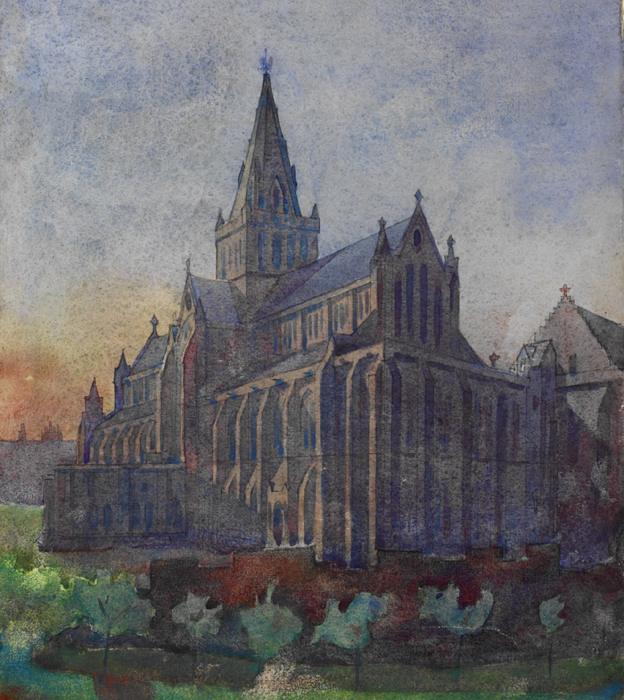
Mackintosh Architecture, external can be seen at the Royal Institute of British Architects in London until 23 May 2015. Admission is free.
Pamela Robertson - Mackintosh expert at the Hunterian Museum in Glasgow - provides video narration and contributed to the text.
All images subject to copyright. Images courtesy Riba/Hunterian Museum Glasgow.
Mackintosh photo: 1893 by James Craig Annan (copyright: T&R Annan/courtesy: Glasgow Mackintosh)